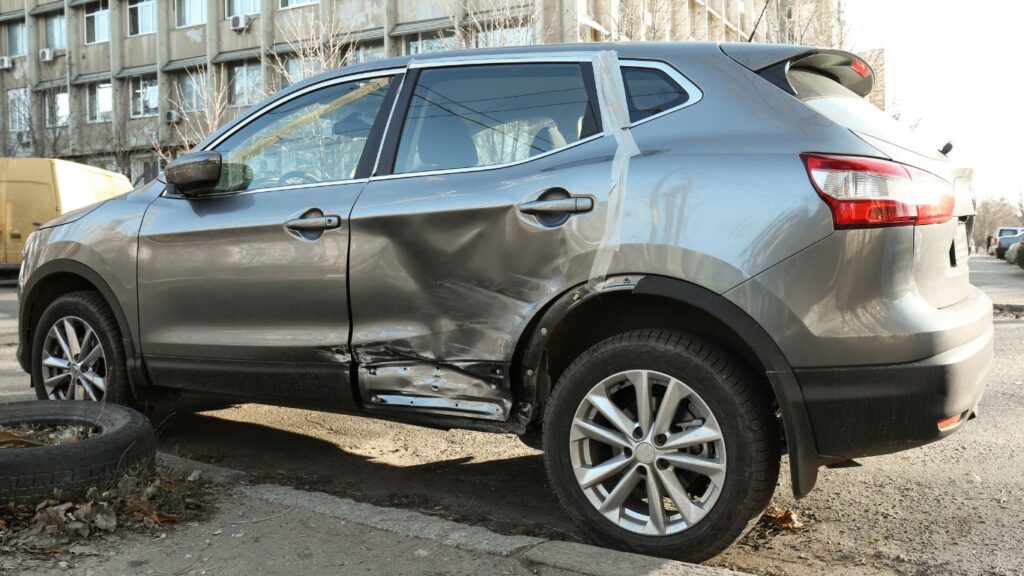Driving is more than a way to get from one place to another. It represents freedom, independence, and staying connected to the world.
For many seniors, driving is essential for staying connected and managing everyday errands like grocery shopping or visiting the doctor. However, as we age, new challenges can emerge that may impact driving safety.
Drivers over 70 face higher crash rates, with only young drivers under 25 having higher risks. What’s more, increased physical fragility makes injuries or fatalities more likely in collisions.
This guide shows you how to recognize the signs when seniors should stop driving, ensure safety, and discover alternative ways to stay independent.
Your Loved Ones Need Good Care – Contact Us!
How Aging Affects Driving Ability in Seniors?
Let’s face it, aging is a natural part of life. And with it, inevitably comes changes that can affect how we do everyday things, such as driving.
Understanding how these changes impact seniors behind the wheel is key to keeping everyone safe on the road.
Physical Changes
These physical changes are often gradual, making them easy to overlook. However, they can have serious consequences on the road.
- Slower reflexes mean it can take longer to respond to unexpected situations, such as a child darting into the street or a sudden stop on the highway.
- Joint stiffness and arthritis may make turning the neck and shoulders painful or difficult, complicating routine maneuvers like checking blind spots or backing out of a parking space.
- Reduced muscle strength, especially in the legs and hands, can limit a driver’s ability to press pedals firmly or control the steering wheel during quick or precise movements.
These limitations don’t always mean your elderly loved one must stop driving immediately. But, they do suggest a need for greater awareness and potentially, vehicle adaptations or driving restrictions.
Sensory Decline
Driving depends heavily on clear vision and acute hearing. Unfortunately, both tend to decline with age, even in healthy individuals.
Vision
Older adults often experience:
- Diminished night vision, making it difficult to drive safely in low-light conditions or at dusk.
- Slower focus adjustments, which can delay recognition of road signs or hazards.
- Reduced depth perception and color sensitivity, increasing the likelihood of misjudging distances or failing to see brake lights and signals.
Hearing

Regarding aging and driving ability, hearing changes can be just as problematic. Seniors may:
- Miss important auditory cues such as honking, emergency sirens, or even the sound of a nearby car.
- Be slower to respond to auditory stimuli, which can be critical in fast-paced or chaotic traffic environments.
Routine eye and ear exams become especially important in later years as part of comprehensive community care. Identifying and correcting these issues can go a long way toward upholding senior driving safety.
Cognitive Challenges
While physical and sensory issues are more obvious, cognitive changes may be more difficult to detect. Nevertheless, they can be equally dangerous on the road.
Memory Loss
Conditions such as mild cognitive impairment or early-stage dementia can cause older drivers to:
- Forget familiar routes.
- Miss exits or turns.
- Become disoriented even in well-known areas.
Slower Processing of Complex Traffic Situations
The ability to quickly assess and respond to complex traffic situations declines with age. This includes tasks like navigating busy intersections or merging onto highways. Seniors may hesitate or misjudge gaps in traffic, increasing the risk of collisions.
Medical Conditions
Many age-related medical conditions directly interfere with safe vehicle operation. These include:
- Neuropathy, which can reduce sensation in hands and feet, making pedal control difficult.
- Cataracts and glaucoma, which impair vision clarity and peripheral awareness.
- Cognitive disorders like Alzheimer’s disease, which severely limit judgment and reaction time.
Medications commonly prescribed for these conditions may also have side effects such as drowsiness, dizziness, or delayed reflexes. Therefore, regular medication reviews with a healthcare provider are essential for understanding their impact on driving.
Warning Signs It’s Time to Stop Driving

Knowing when seniors should stop driving is never easy. But identifying the signs early can help prevent serious accidents and save lives.
Observable Driving Behaviors
Watch for:
- Frequent close calls or unexplained vehicle damage.
- Difficulty staying in a lane, braking abruptly, or executing turns.
- Getting lost on familiar routes or confusion at intersections.
Self-Reported Concerns
Seniors may express:
- Anxiety or discomfort while driving.
- Fatigue or disorientation after short trips.
- Difficulty judging speed or spacing between vehicles.
Feedback From Loved Ones
Often, family members or caregivers are the first to notice an age-related driving decline. If passengers express concern or stop feeling safe riding with a senior driver, it’s a red flag that needs to be taken seriously.
How To Evaluate Driving Safety in Seniors?
Thankfully, there are several ways to evaluate whether a senior is still capable of driving safely. This ranges from simple self-checks to professional assessments.
Self-Assessment Tools
Self-assessment tools allow seniors to evaluate their driving habits and identify potential safety concerns in a private, low-pressure way.
- AARP’s Driver Safety Quiz and similar tools can help older adults reflect on their habits and capabilities in a non-judgmental format.
- AAA’s Roadwise Review offers a computer-based assessment of visual, cognitive, and motor skills linked to driving safety.
Professional Evaluations
For a more comprehensive assessment of driving abilities, professional driving evaluations for the elderly are a valuable resource.
- Occupational therapy evaluations assess reflexes, vision, and mental sharpness, and often suggest personalized strategies to improve safety.
- Behind-the-wheel tests, conducted by DMVs or rehab centers, allow professionals to evaluate real-world driving skills.
- Medical checkups ensure vision, hearing, and medications are optimized for safe driving.
Strategies for Safer Driving (If Continuing)
When older adults choose to keep driving, there are still effective strategies to help them stay safe behind the wheel.
Self-Regulation
Self-regulation plays a critical role. By choosing not to drive at night, during rush hour, or in bad weather, seniors can avoid high-risk conditions. Sticking to familiar routes and planning trips in advance also minimizes stress and increases confidence.
Vehicle Modifications
Small adjustments can have a big impact. Features like larger mirrors, backup cameras, and power steering can help accommodate physical limitations. Programs like CarFit even offer personalized recommendations for adjusting the car’s seating, mirrors, and controls for optimal comfort and safety.
Continued Education
Ongoing driver education is another excellent tool. Courses specifically designed for seniors, offered by groups like AARP and AAA, can help reinforce best practices and introduce updated road laws. Many also offer insurance discounts as an added incentive.
How to Make the Decision for Seniors to Stop Driving?

Eventually, a time may come when the risks of driving outweigh the benefits. Navigating this decision requires empathy, patience, and planning.
Emotional Realities
For many seniors, driving symbolizes autonomy and control. Letting go of the wheel can lead to feelings of grief, isolation, and frustration.
So start by acknowledging these emotions openly and validating them. Also, reassure them that stepping away from driving doesn’t mean losing connection or freedom.
Family Involvement
At its foundation, the conversation should be compassionate, not confrontational. Therefore, begin with shared concern for safety.
Use specific examples instead of general criticisms. Statements like “We’re noticing it’s becoming harder for you to manage busy intersections” can be more effective than simply saying “You’re not driving well anymore.”
But you may be wondering who should speak up? Often, adult children, spouses, or trusted physicians are the best messengers. Furthermore, a doctor’s medical authority can offer objectivity, while loved ones provide emotional reassurance.
Legal & Ethical Considerations
If a senior refuses to stop driving despite obvious danger, some states allow concerned parties to request a medical or driving evaluation through the DMV. However, remember that this route should be approached with care, emphasizing safety rather than punishment.
Alternatives to Driving for Seniors
Thankfully, stopping driving doesn’t mean giving up independence. Today, there are more mobility options for aging adults than ever before.
Community Transportation
Local transit authorities often offer reduced-fare or senior-friendly transportation programs. Many cities also provide shuttle services for medical appointments and grocery shopping, designed specifically with older adults in mind.
Technology-Based Solutions
Apps like Uber and Lyft have made on-demand transportation more accessible. Some services even offer trained drivers who assist seniors with mobility needs. Also, delivery apps can bring groceries, prescriptions, and meals straight to the door, reducing the need to drive for errands.
Support from Family and Community
Family members, friends, and volunteer driver programs can also help bridge the gap. Arranging a ride schedule with loved ones ensures seniors stay connected to the community while maintaining their dignity and independence..
Transition Tips
Helping seniors transition from driving takes time. Encourage small steps, such as riding with others more frequently or testing rideshare apps before fully giving up the car.
Moreover, maintaining regular routines, social visits, and independence through other means can significantly ease the emotional burden.
Verdict: It’s a Tough Decision, but Your Senior’s Safety Depends on It
Recognizing the signs, utilizing available tools, and addressing the issue with compassion and care helps families and seniors make informed decisions together.
Safe mobility is important at every age, and with the right support, seniors can continue to thrive both on and off the road.
For more information, check out AARP’s We Need to Talk guide and AAA Senior Driving for tools and tips.
At Downey Community Health Center, we provide the guidance and care your loved ones need. Partner with us to ensure seniors live with safety, dignity, and independence.
Contact us today to learn more about our community nursing home and the support we offer!







